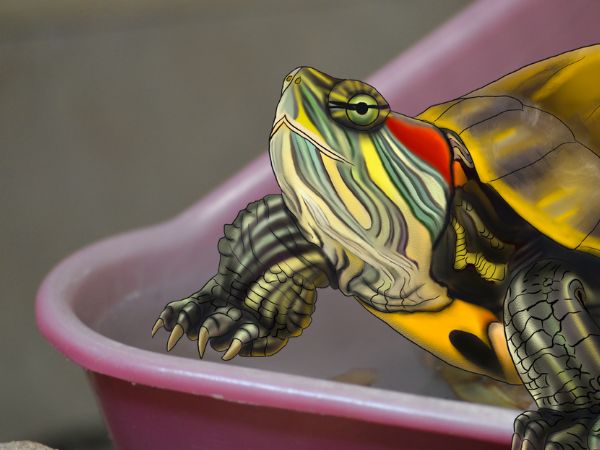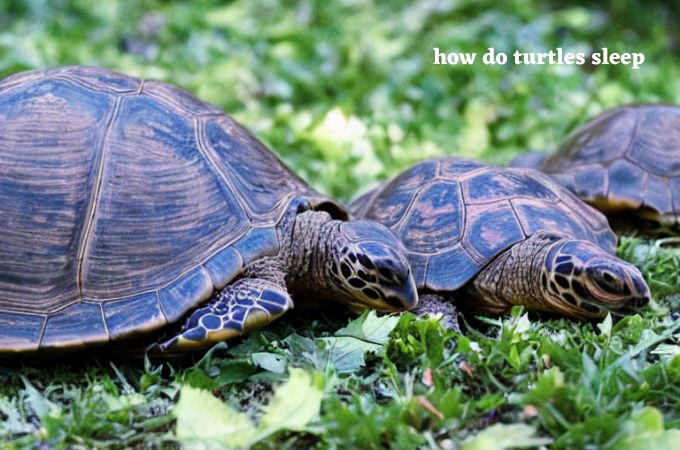Do Turtles Need Sunlight? When and Why Turtles Need Light
If you are a first-time turtle owner, you might be concerned with many issues while building its tank. You might want to know the lighting necessity, space required, and basking importance for turtles. And that’s fine as a novice.
In fact, the most common question we come across is. “Do turtles need sunlight?” Yes, sunlight is essential for turtles for basking and warmth. Although many artificial lighting systems will mimic the natural lights of the turtle habitat, allowing the turtle to enjoy natural sunlight is the best thing you can do for the pet.
Also, turtles will need UVA and UVB lighting for warmth and health. Besides, basking is one of the favorite pastimes of turtles, requiring proper lighting, preferably sunlight.
Do Turtles Need Sunlight
Yes, turtles need sunlight not just for one reason only but for many reasons. Whether they live in the wild or in captivity, sunlight is absolutely necessary for them.
1. Sunlight Is Essential for Basking
Basking, whether in captivity or in the wild, is an essential and integral part of a turtle’s life. It is a behavior where turtles sit in a dry position for some time after leaving the water.
This basking behavior can last anywhere from a few minutes to several hours. Typically, turtles seek out elevated spaces such as rocks or tree trunks to bask on, but if they find a suitable area with proper sunlight, they can bask on any flat surface.
The importance of basking remains the same for turtles living in turtle tanks or large ponds in captivity. It allows them to receive necessary UV rays and helps to keep their skin and shell dry.
Turtles spend a significant amount of time in the water, which means they often become wet. Drying off their shell periodically becomes crucial.
Additionally, when turtles spend extended periods in the water, they face various risks. These risks include exposure to fungi, algae, and bacteria that thrive in water. These organisms can also be found in ponds and turtle tanks that are created at home.
To combat these potential risks, turtles engage in basking behavior. By exposing themselves to sunlight, they can dry off their skin and shell, which helps to prevent the growth of bacteria and fungi.
While manufacturers offer basking lights as an alternative, allowing turtles to bask in natural sunlight is the optimal choice. Not only does it aid in keeping their skin and shell healthy, but it also has a positive impact on their overall mood and well-being.
2. Sunlight Stops Shell Rot
Since turtles spend a significant portion of their lives in water, ranging from about 60% to 75%, it puts them at an increased risk of developing a condition known as shell rot. This condition refers to a bacterial or viral attack on the turtle’s shell, which can weaken the shell and ultimately lead to the turtle’s demise.
The main culprit behind shell rot in turtles is the lack of vitamin D3 in their bodies. Therefore, turtles have developed a clever way to replenish this essential nutrient by basking in the warm rays of sunlight for extended periods. By exposing themselves to sunlight, turtles can absorb vitamin D3 and ensure the proper functioning of various body processes.
To avoid the dreaded shell rot and maintain a healthy existence, turtles must find a suitable dry spot where they can bask under direct sunlight for a sufficient amount of time. This sunlight not only serves as a source of vitamin D3 but also plays a crucial role in fulfilling other vital needs of these remarkable creatures.
3. Lights Maintain Circadian Rhythm in Turtles
The circadian rhythm, often referred to as a body clock, plays a crucial role in regulating the activity levels of turtles during both day and night. Just like humans, turtles rely on this internal clock to determine how long they will remain active and when they should rest.
In their natural habitat, sunlight serves as the primary cue for turtles to synchronize their circadian rhythm. The rays of the sun provide important signals that help turtles maintain a consistent pattern of activity and rest.
However, even when turtles are kept in captivity, they still require sunlight for the same reasons. To address this need, turtle owners employ various lighting options that aim to replicate the natural sunlight.
These artificial lighting sources serve as a substitute for sunlight and assist in ensuring that the turtles’ body clocks, or circadian rhythms, are properly regulated.
By carefully mimicking the lighting conditions found in their natural environment, turtle owners can help their reptilian companions maintain a healthy and balanced daily routine.
4. Light Keeps Turtle Warm
Turtles, being reptiles, fall under the category of cold-blooded animals due to their inability to regulate their own body temperature. As a result, they rely on external sources of heat to keep themselves warm and maintain their bodily functions.
To achieve this, turtles often spend prolonged periods basking in the sunlight, absorbing the necessary warmth from the sun’s rays.
When turtles are kept in captivity, it becomes essential for their owners to provide them with proper lighting to safeguard their body heat.
In this regard, turtle owners employ various types of lighting to create and maintain an optimal level of heat within the tank and its surroundings.
By carefully managing the lighting conditions, turtle owners ensure that their beloved pets can thrive in a suitable environment that meets their specific temperature requirements.
Why Do Turtles Need UVA and UVB Light?
UV-light stands for Ultraviolet light. It is essential for a turtle for different reasons. On top of it, turtles need both UVA and UVB light, especially when they live in tanks.
Although many people suggest that UVA isn’t as important as UVB, this is not true. UVA light comes with different benefits for turtles which include-
- UVA light is crucial for the mating capacity and breeding of turtles.
- Turtles’ metabolism is dependent on UVA light. So, it controls turtles’ activity levels too.
- UVA light will also regulate turtles’ moods largely.
- Turtles can see through the UVA spectrum. So, without UVA light in their tank, they will not understand their surrounding as they will not find the UVA spectrum and its colors.
Next comes the UVB lighting. It is almost a survival essential for turtles. If they lack UVB lighting around their habitat, they can get sick and may even die. The benefits of installing UVB light in turtles’ tanks are limitless.
First off, UVB light provides turtles with vitamin D3. It is extremely vital for turtles since the lack of vitamin D3 can be deadly for turtles. If a turtle is suffering from vitamin D3 deficiency, it will boost the shell rot in the turtle. On top of it, it limits the natural growth of turtles. Turtles will even experience bone and shell decay.
Ideally, you should arrange proper lighting for at least 10-12 hours to help the turtle survive and live healthily. If you don’t provide it with enough light, it will face various complications, which may even lead to premature death.

Conclusion
sunlight is essential for turtles to survive both in the wild and in captivity. It provides turtles with enough light and heat to regulate their body warmth through basking. When you put turtles inside the room, you have to provide UVA and UVB lighting that mimics its natural lighting.




